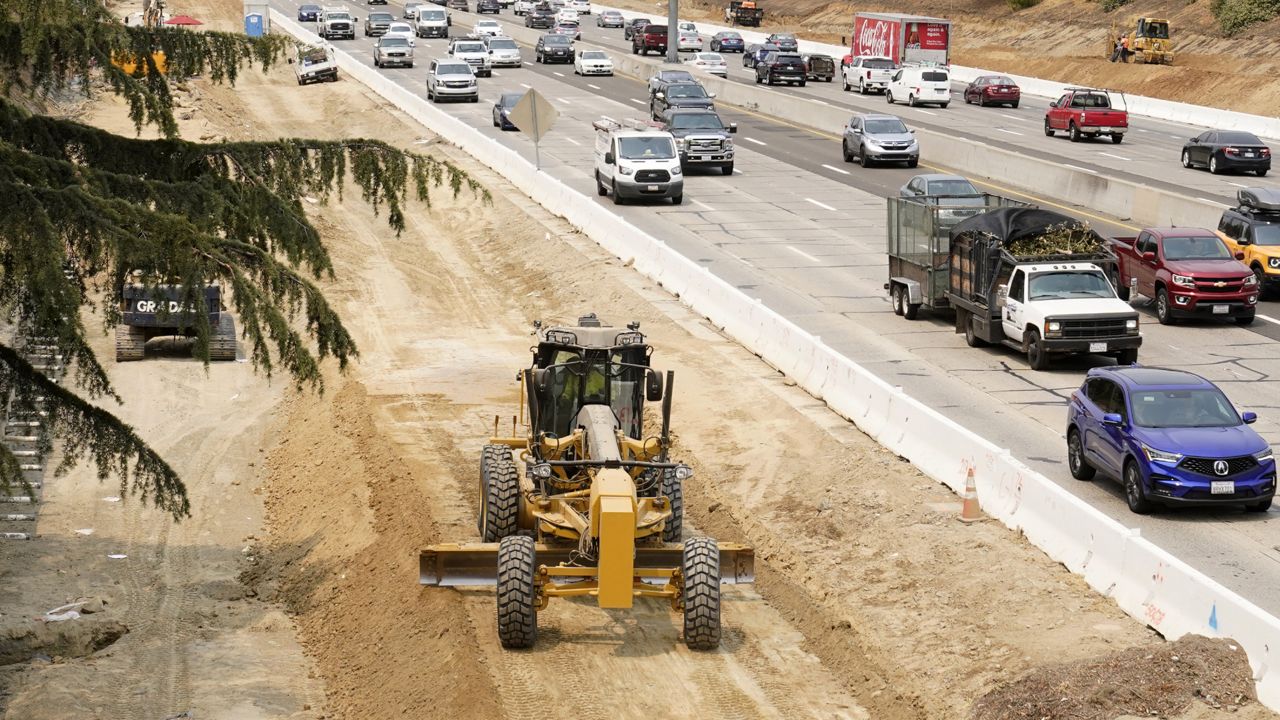New transit centers, zero-emission automated vehicles and safer pedestrian trails: These are just a few of the projects being funded with the $1 billion in grant money awarded to states by the Department of Transportation on Friday.
The funds are part of the DOT’s Rebuilding American Infrastructure with Sustainability and Equity (RAISE) grants program, which supports projects that “improve infrastructure, strengthen supply chains, make us safer, advance equity, and combat climate change,” transportation secretary Pete Buttigieg wrote in a statement.
This year’s billion-dollar investment was split between 90 projects in 47 states, plus Washington, D.C. and Guam. The highly-competitive grant program saw nearly ten times as many applicants than it could award money.
Buttigieg noted that with passage of President Joe Biden’s bipartisan infrastructure law, the federal government will soon be “able to support far more infrastructure projects to support jobs and everyday life in communities across the country."
The projects range in scope and size, but the department considered safety, sustainability and impact on the environment, quality of life, economic opportunities, state of good repair, innovation, and the range of stakeholder partnerships in awarding the grants.
"They will create thousands of good paying jobs, improve safety, support transformative technologies, and advance equity and climate," a senior DOT official said of the projects, adding that the grant recipients "reflect an equal portion of rural and urban projects."
"We're particularly proud that this round of awards includes our most significant raise in investments ever in tribal communities, funding six projects at more than $62 million," the official continued.
The biggest lump sum, $25 million, was given to two separate projects: One to reconstruct 21 miles of U.S. Highway 64 in New Mexico with more resilient infrastructure, and another to connect a 300-acre project area in Manchester, Connecticut with surrounding communities.
Many of the other grants go towards green transportation. North Carolina was awarded over $19 million to construct a “shared use greenway” in downtown High Point that officials hope will reduce traffic congestion, increase pedestrian and biker safety and lessen toxic runoff to area waterways.
Charlotte, North Carolina was awarded a separate $15 million to construct a “multimodal transit center” that will replace the current open-air bus station. The new center will include an underground bus concourse with access to regional and local transportation, as well as new bike and pedestrian trails; the city government intends to develop retail and office space on top of the facility once construction is complete.
Another transit project in Tampa, Florida was awarded $18 million for the “Tampa Heights Mobility Corridor,” a series of upgrades that includes widening traffic lanes, fortifying storm and sewage infrastructure and installing new crosswalks across several miles of city streets.
The city of Oakland in California was given over $14.5 million to overhaul its pedestrian and bike safety measures along Broadway Corridor and Martin Luther King Jr. Way. The upgrades will include raised medians, high-visibility crosswalks and buffered bikeways.
Carlos Monje, DOT’s under secretary for policy, joined Oakland Mayor Libby Schaaf to announce the award on Friday, saying the funds will be used to improve the quality of life by “expanding alternative transportation and access for disadvantaged communities” across the city.
Those are all capital grants, and are intended to go towards projects already planned or in motion. The capital grants cover a portion of the multi-million dollar costs of any given project.
The DOT also released funds — albeit in smaller allotments — for planning grants, which support the development and research stages of a proposed project.
For example, California’s Yolo County was awarded $1.2 million to develop an implementation plan for a bike system, which will require, in part, “community outreach” and “an assessment of e-bike and scooter charging feasibility.”
In Texas, El Paso and Dallas each received $900,000 in planning grants.
El Paso will use its grant to develop a plan for a “park-like deck above the already sunken I-10 that separates downtown and uptown El Paso”; Dallas is set to plan a series of transportation plans including a new pedestrian bridge from the city’s commuter rail line to the Dallas Zoo.
The RAISE program is hardly new, although it has existed under various names. The most recent iterations were the BUILD and TIGER grants, and it was first created under then-president Barack Obama as part of his 2009 Recovery Act.
In the decade-plus since its creation, Congress has allocated nearly $10 billion for national infrastructure investments under the grant program.



